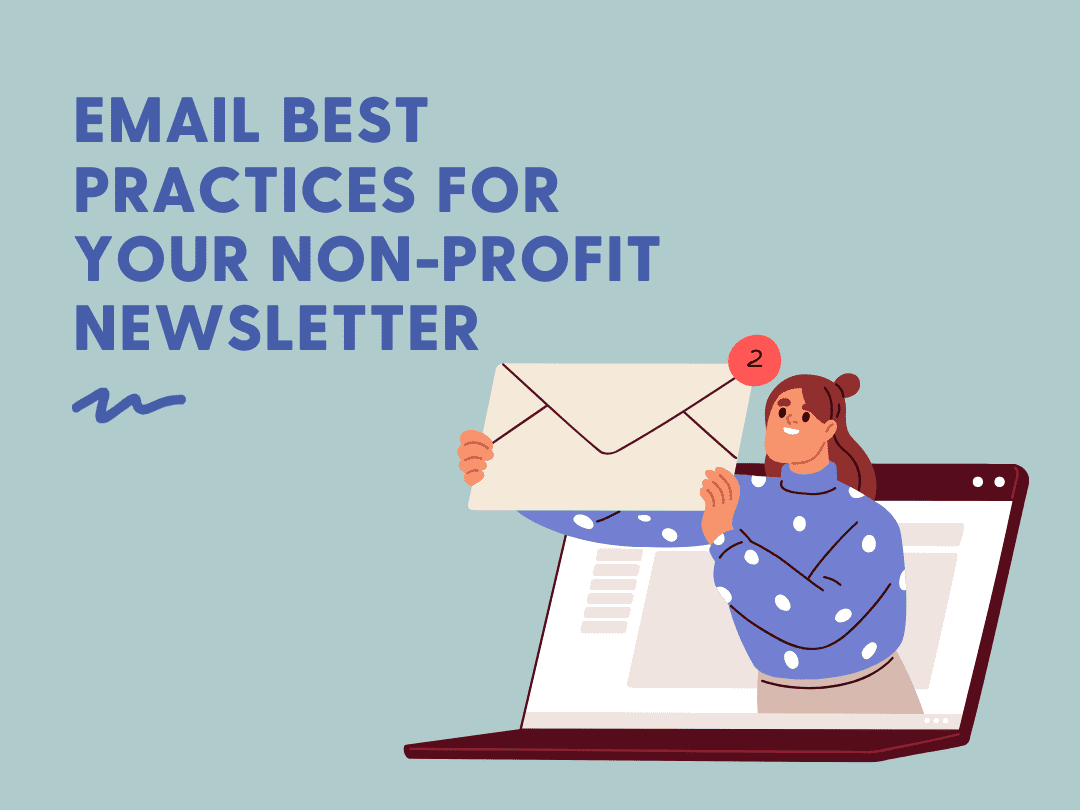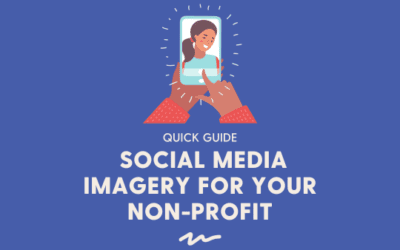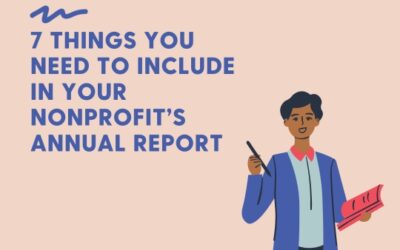Email lists are marketing gold. It’s one of the last platforms where you have access to your contacts’ information, which means you can connect with your audience even if a social media platform goes down. If you remember the collective chaos of the Instagram outage, you know how vulnerable businesses felt without that channel of communication. If email is your non-profit’s friend (trust us, it is!), let’s make sure you’re using it to its full potential.
First, let’s take stock of how your newsletter stacks up.
Non-profits have an average email list size of 4191 contacts (547 for small organizations and 6602 for large organizations), an average open rate of 28.59%, and an average click rate of 3.29%. If you’re experiencing the average or lower, the email best practices we’ve curated below will help you improve your non-profit newsletter.
Let’s get that average up right away with some email best practices you can start enacting right away.
1. Integrate!
Integrate your non-profit’s email marketing system with your fundraising or donation tool, as well as your website and any other web-based tools you have that can integrate. This will provide you with more data. More data means you can make better decisions.
2. Keep your subject line short and personal.
Subject lines should be under 11 words. Longer subject lines will get cut off in the inbox preview and quickly lose their meaning.
Consider using your donors’ first name to personalize the subject line using the power of automation. Your email marketing system may refer to this as “merge tags” or “personalization”. Emails with personalized subject lines are 26% more likely to be opened.
Honestly, subject lines are tricky. You want to be honest about the content of your email — but not repetitive — so that your audience starts opening your emails. When you’re sending a recurring email, like your monthly recurring newsletter, it can get difficult to keep the ideas flowing. Many mass email marketing tools (like Mailchimp) have a subject line suggestion tool built into them, or you can use tools like CoSchedule’s Subject Line Tester for suggestions on how to make your subject lines stand out.
3. Include alt text for all your images.
For an improved email experience, include alt text. On top of making sure you’re delivering an accessible experience for anyone with vision impairments who’s on your email list, there are benefits to many others in your community. If a tech challenge occurs for your recipient,, they can still understand your intended meaning when alt text is present. Spam filters are also tougher than ever, so an email without alt text is way more likely to find itself lost to the dreaded spam folder.
4. Link it up!
Make it extremely hard to miss your links. Use links in your text, on buttons, and link your images. Especially the big link you want your audience to click on (i.e. a donation page). Try to link multiple times to your asks.
And before you hit send — test your links. It’s happened to us all when we’ve gotten too excited or we’re running out of time, only to hit send before we’ve tested the links. Skipping a link check means your links may come up broken, and more than likely, it will be the most important link in your email. Save yourself the headache and the correction email! Test your links before you hit send.
5. Don’t lead with a big image.
The hero image was once a best practice, especially for organizations / businesses. It was the thing all brands did to grab your attention. Now, large hero images at the top of your email newsletter are impacting your deliverability and dissuading your donors/stakeholders from reading your email’s content. Dive right into the juicy content!
Try this! Many organizations are having success with sending out un-designed, plain-text emails for important requests or information updates. As a designer, I think there’s always a place for a beautiful email that gives your audience an experience, but a plain text email occasionally might just be the thing that gets your email noticed.
6. Let them unsubscribe, if they want to.
This is actually a legal issue. You must include a link for your recipients to manage their subscription status within email campaigns you send out. It’s also just not cool to try and trick people onto staying on your list. Let people opt in or opt out. Bonus! You’ll narrow down who your true community is by doing so!
7. Make it an email they want to read.
This goes for content you’re creating anywhere (on the internet or offline), but really think about the benefits of the content for your audience.
What do they most want to hear about? What will have an impact? People who are on your email list have asked to hear from you in a direct way. They were once compelled to give you their personal, private contact information to hear more about your organization.
Give them an insider’s view into what you do, provide them with more detailed information about your programming, and show off your organization’s impact. Do it in a way that is fun, engaging, educational, and meaningful, and your audience will stick around.
Bonus! Repurpose content that already exists. Your newsletter is a great opportunity to repurpose content. Include links to recent social posts, blogs, web pages, reviews, or other content that already exists somewhere on the internet. Use your newsletter to direct your community to other sources of information that will be valuable to them.
So, be honest! How are you feeling about your non-profit’s newsletter right now? Check in with your team to see if there’s room for improvement to help you reach your goals. Need a hand? If you want to brainstorm ways to improve the experience, we’re here to help.




